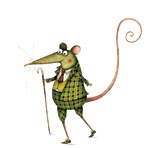Country mouse observes the increasing numbers of seagulls
Country mouse considers the seagulls populating the countryside in increasing numbers.


A covey of partridge huddles together like a clot of dumplings sticking out of a brown stew. These corpulent birds stay together in family groups and will adopt orphans into their own covey if the parents of another family perish. However, these brown blobs could easily be overlooked as the field is full of bright, white seagulls. They look out of place to my eye; white is not the colour of the countryside’s inhabitants and it jars, as the violent yellow of the rape will against the kaleidoscope of soft greens in May.
But the seagulls appear to be populating the countryside in increasing numbers, leaving their seaside homes for rubbish tips, towns and, now, the open spaces. With much of rural Britain sadly crowned in a bed of litter, maybe they don’t feel out of place, but the arrival of such an aggressive bird will surely have a knock-on effect on the usual residents. Much has changed since I was a boy: the seagulls sit in fields where the lapwings once ruled, I see more foxes in London than at home and I spot dozens and dozens of dead badgers on the roads for every squashed hedgehog. I wonder what lasting effects these changes will have?
Exquisite houses, the beauty of Nature, and how to get the most from your life, straight to your inbox.
Mark grew up in the Cotswolds and began his career as a gold prospector. He became editor-in-chief of Country Life in 2006, having previously been in charge of more than 50 magazines, including Horse & Hound. He attributes his success to David Bowie and fly-fishing.
